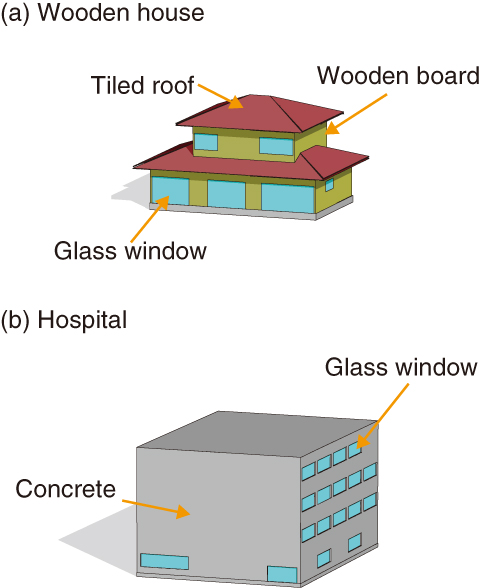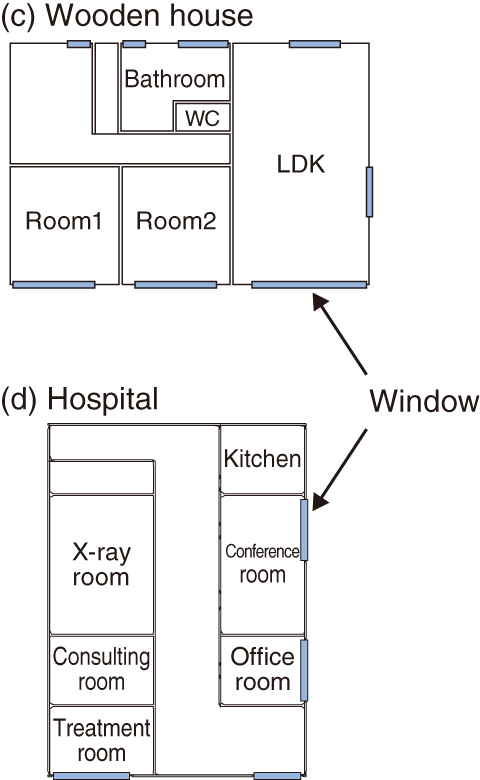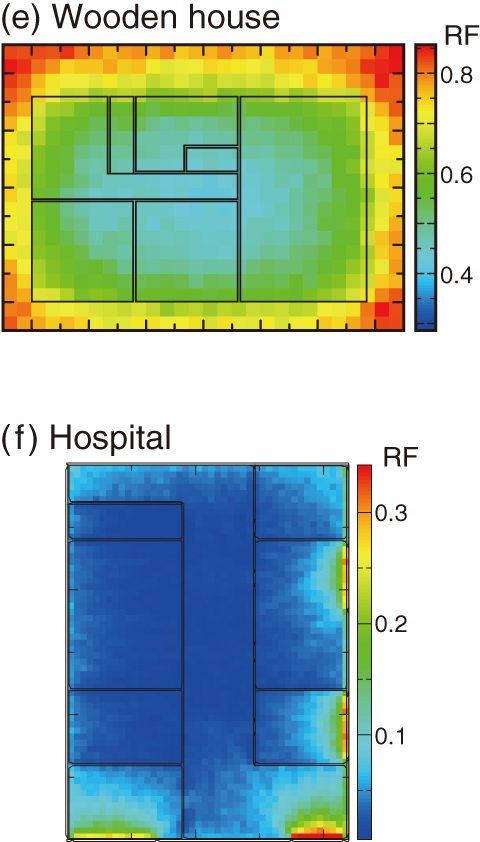
Fig.1-19 Outside appearance of building models

Fig.1-20 1st floor layouts in building models

Fig.1-21 Distribution of the radiation dose RF
Radioactive nuclides were discharged by the accident at the TEPCO’s Fukushima Daiichi NPS (1F) and radioactive cesium (Cs) still remains in the environment. Precise radiation dose assessment is important for public health and for plans for the return of evacuees. Information about the dose rate measured in the open air has been made available for each area by radiation monitoring, which has been conducted since the accident at 1F. On the other hand, residents spend large amounts of their daily lives inside buildings, where dose rates are reduced compared with their values in open air. Thus, evaluation of dose reduction in various buildings is required for the assessment of external radiation dose exposure accounting for individual lifestyles.
We selected 27 types of buildings based on surveys of buildings in the Fukushima area, and investigated the dose reduction in these buildings by means of numerical simulation analysis. These selected buildings were constructed as three-dimensional models (Fig.1-19) with consideration of their inner structures and compartmentalization of their rooms based on their usages (Fig.1-20). By incorporating the building models into the radiation transport code, PHITS, the behaviors of γ-rays were simulated from radioactive Cs homogenously distributed over the ground surface to inside the buildings. We computed the dose ratios of the inside of the buildings to the outside, the so-called reduction factor (RF), with these simulations. In addition, the distribution inside the buildings was illustrated on top of the layout (Fig.1-21) to analyze the influence of building’s configuration on RF.
In wooden houses, the radiation dose decreases towards the center (Fig.1-21(e)) and RF becomes lower for a house with a larger size. This tendency is due to the absence of radioactive Cs beneath the house. In contrast, the dose rates inside concrete buildings are lower than those inside wooden houses because of the high shielding effect of concrete walls. The RF distribution in concrete buildings is largely influenced by the location and size of the windows, which offer little shielding effect (Fig.1-21(f)).
We developed a technique for analyzing the influence of building configuration on dose reduction in various buildings. The obtained data are expected to be useful for dose estimation and reduction countermeasures for returning residents.